#Silk road
Text
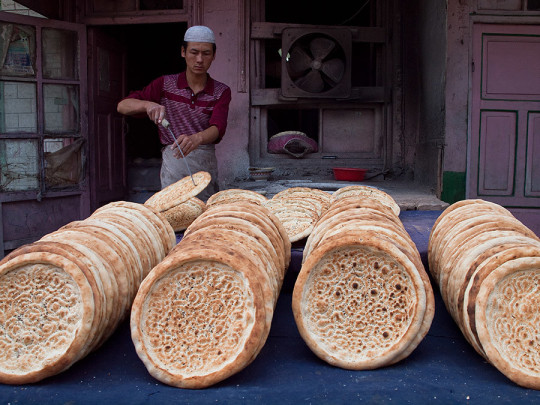
Uyghur bread, Xinjiang China.
895 notes
·
View notes
Text




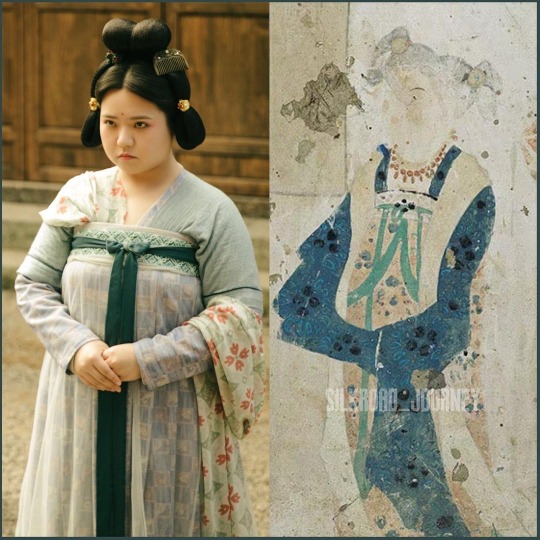

Tang dynasty period drama (Luoyang 风起洛阳) 2021
Vast majority of the C-drama costumes are restored based on real Tang dynasty paintings from the Mogao Caves. These are some examples.
Photos credit: silkroad_journey on Instagram.
#chinese history#chinese culture#hanfu#tang dynasty#Buddhism#mogao caves#China#silk road#ancient china#Medieval China#chinese drama#cdrama#hanfu recreation#Hanfu restoration#dynastic china#art
225 notes
·
View notes
Text
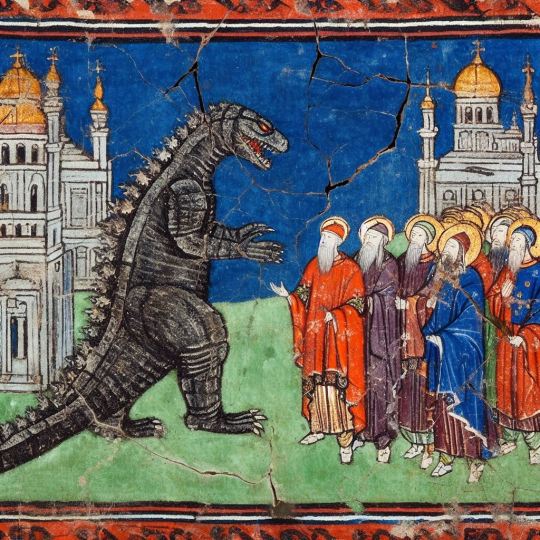
Godzilla was chosen by Byzantine emperor Andronikos II Palaiologos to meet the first Chinese delegation sent to Europe in the 14th century.
129 notes
·
View notes
Note
there was Chinese interest in the Out Of Asia theory, in both the Republic, Chiang Republic and People’s Republic periods before the Out Of Africa theory became commonly accepted. Was the 1954 Yeti expedition done just from the Nepalese-Indian side or were the American agents and “anthropologists” given access on the Sino-Tibetan side of the Himalayan border?
During the early part of this century, it was absolutely believed for a long time that the deserts of Western China were the most likely place of human origins, as seen in this migration map from 1944, made from the best available knowledge of the time:
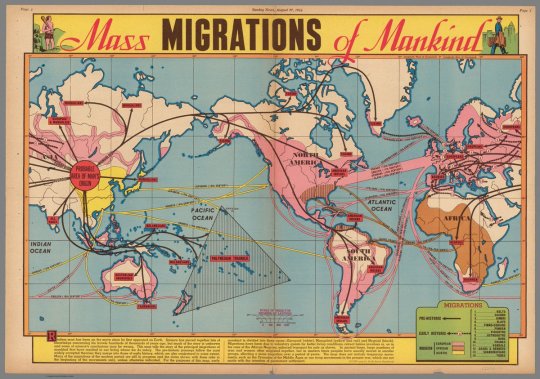
Remember, the oldest fossil remains at this point were in China, where Homo erectus was discovered (originally known by his initial place of discovery in Chungkotien Cave, nicknamed "Peking Man"). The discovery of Australopithecus and Homo habilis in Olduvai Gorge and South Africa, which place human origins in Africa, were not until the 50s and 60s, so it seemed entirely reasonable that Homo sapiens evolved in Western China.
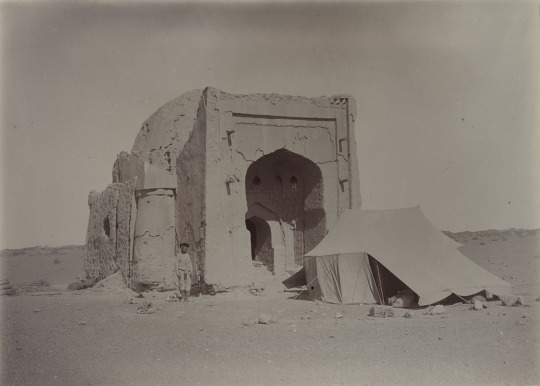
The idea that China's desert regions were the origin of modern humans and culture is seen a lot in pop culture from 1900-1950, mainly because there were tremendous explorations in the region, especially Aurel Stein's expedition of 1908, who ventured into the Taklamakan Desert to find the Dunhuang Caves and Khara-Khoto, a city destroyed completely by Genghis Khan and vanished in the desert.
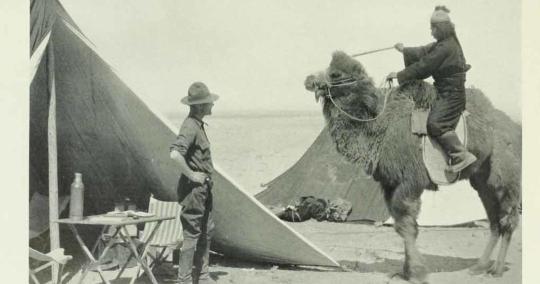
If you've ever heard of Roy Chapman Andrews and his famous expeditions in the 1920s, it's worth noting that he ventured into the Gobi Desert looking for human remains....not dinosaurs, and the discovery of dinosaur eggs was an unexpected surprise.
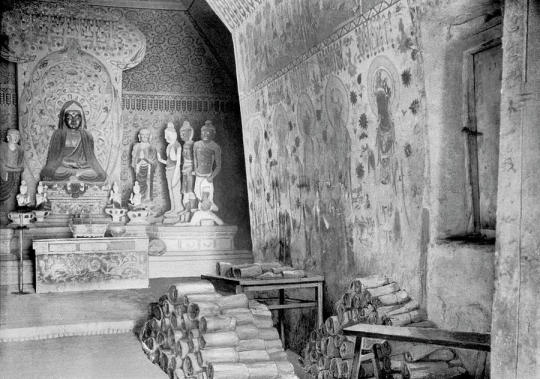
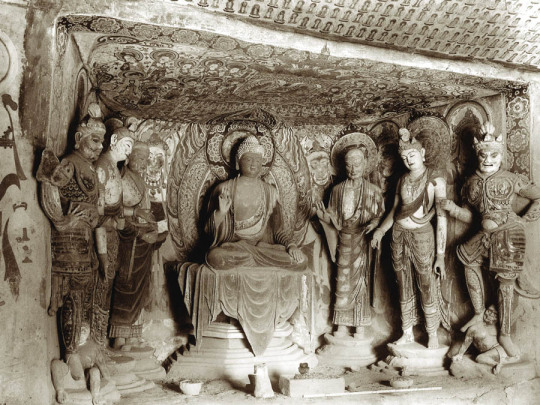
For that reason, there was a short lived Silk Road Mania that seemed to be a smaller scale predecessor to the pop culture dominating Egyptomania of the 1920s. It's bizarre to read adventure and fantasy fiction of the 1910s-1920s that features mentions of Silk Road peoples like the Kyrgyz, Sogdians, Tajik, Uigurians, and Tuvans. The best example I can think of would be the Khlit the Kossack stories of Harold Lamb (who also wrote a biography of Tamerlane), which together with Tarzan and Tros of Samothrace, formed the core inspiration for Robert E. Howard's Conan the Barbarian.
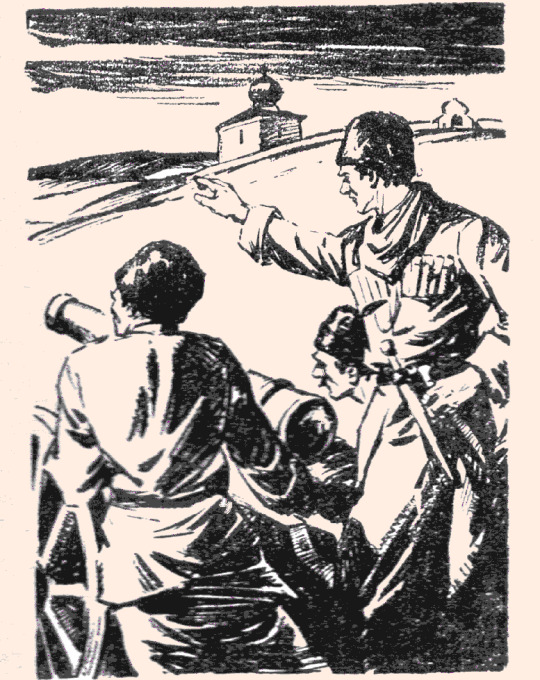
The most interesting example of this would be A. Merritt's Dwellers in the Mirage, which featured a lost city in Xinjiang that was the home of the Nordic race, who worshipped their original religion, the kraken-like squid devil god Khalkru. It was widely believed in this era that Nordics emerged from Central Asia originally, and while it's easy to write this off as turn of the century racialist claptrap pseudohistory (along with Hyperborea legends), in this case, it is actually true: a branch of the Indo-European family lived in West China, and 5,000 year old redheaded mummies have been found in the region. As usual, A. Merritt was right on the money with his archeology, more so than other 1920s authors. After all, his "Moon Pool" was set around the just discovered ruins of Nan Madol, the Venice of Micronesia.

Jack Williamson's still chilling Darker Than You Think in 1948 was also set in the Silk Road/Central Asian region, as the place the race of shapeshifters emerged from, Homo magi, who await the coming of their evil messiah, the Night King, who will give them power over the human race.
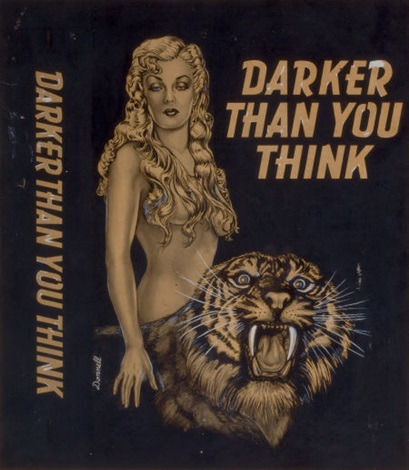
H. Rider Haggard set "Ayesha: the Return of She" (1905) in Xinjiang, among a lost Greek colony in Central Asia (no doubt based on Alexandria on the Indus, a Greek colony in modern Pakistan that was the furthest bastion of Greek Culture). This was also two years after the Younghusband Thibetan Expedition of 1903, where the British invaded Tibet. At the time, the Qing Dynasty was completely declining and lost control of the frontier regions, and the power vacuum was filled by religious authority by default (this is something you also saw in Xinjiang, where for example, the leader of the city was the Imam of Kashgar).
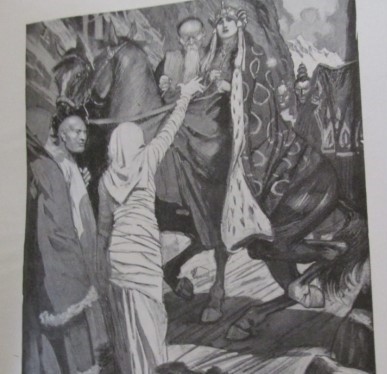
This is one of the many British invasions they have attempted to cram down the memory hole, but if you ever see a Himalayan art piece that was "obtained in 1903-1904" ....well, you know where it came from.
Incidentally, there's one really funny recent conspiracy theory about paleontology, fossils, and China that I find incredibly interesting: the idea that dinosaurs having feathers is a lie and a sinister plot spread by the Communist Chinese (who else?) to make American youth into sissy fancylads, like Jessie "the Body" Ventura. How? By lying to us and making up that the manly and vigorous Tyrannosaurus, a beast with off the charts heterosexuality and a model for boys everywhere, might have been feathered like a debutante's dress. What next - lipstick on a Great White Shark? The long term goal is to make Americans effeminate C. Nelson Reilly types unable to defend against invasion. This is a theory that is getting steam among the kind of people who used to read Soldier of Fortune magazine, and among abusive stepfathers the world over.

...okay, are you done laughing? Yeah, this is obvious crackpottery and transparent sexual pathology, on the level of the John Birch Society in the 60s saying the Beatles were a Communist mind control plot. Mostly because animals just look how they look, and if it turned out that the ferocious Tyrannosaurus had feathers and looked like a fancylad Jessie Ventura to you, well, that's your problem and mental baggage, really.
I was left scratching my head over this one. But there is (kind of) something to this, and that is that a huge chunk of recent dinosaur discoveries have been in China. I don't think it has anything to do with a Communist plot to turn American boys into fancylads, but more to do with a major push in internal public investment in sciences in that country, and an explosion of Chinese dinosaur discoveries. If you want to see a great undervisited dinosaur museum, go to the Zigong Dinosaur Museum in Sichuan.

Pop quiz: what living scientist has named more dinosaur discoveries? It's not Bakker or Horner. The greatest living paleontologist, Xu Xing, which is why a lot of recently found dinosaurs are named things like Shangtungasaurus.
241 notes
·
View notes
Text
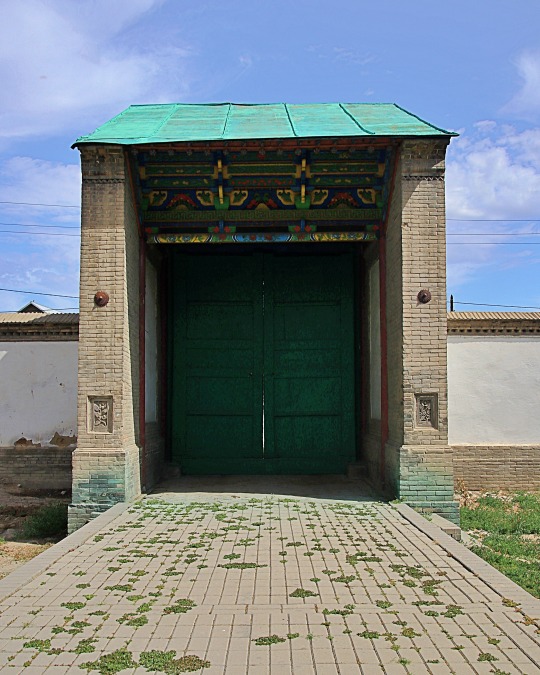
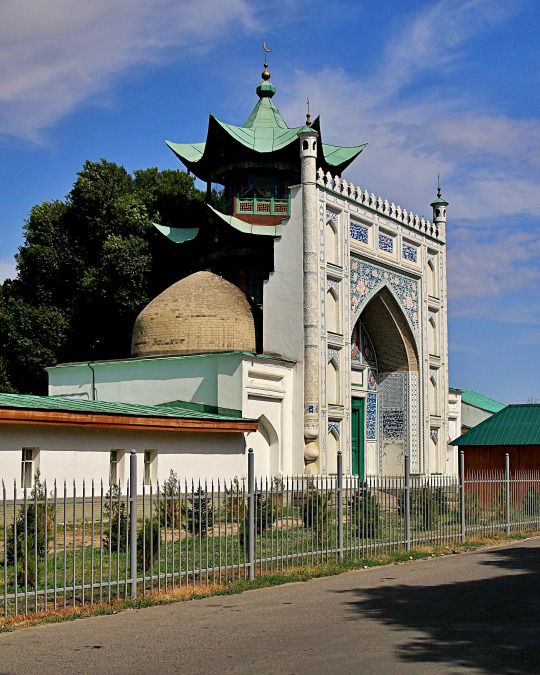
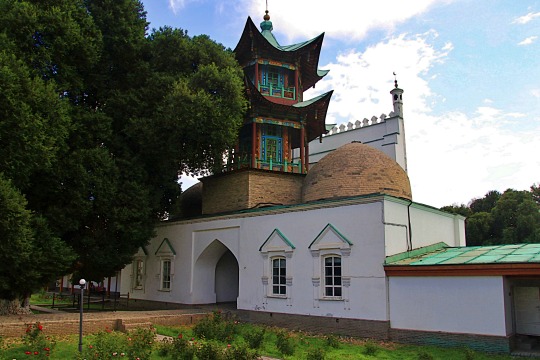
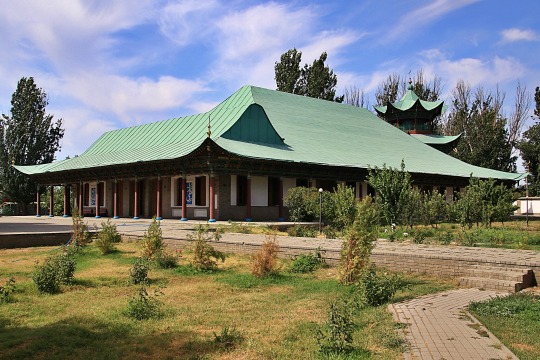
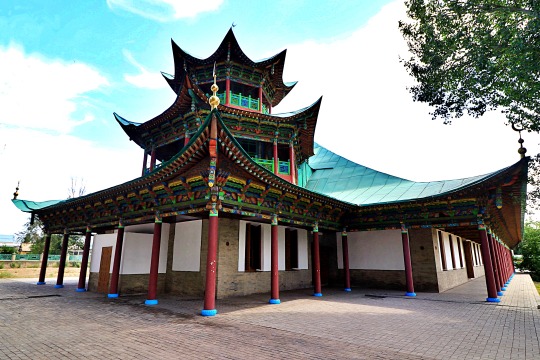

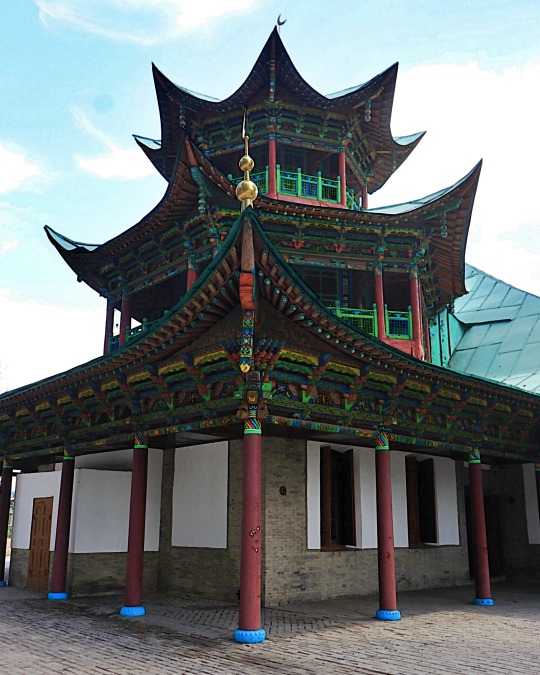
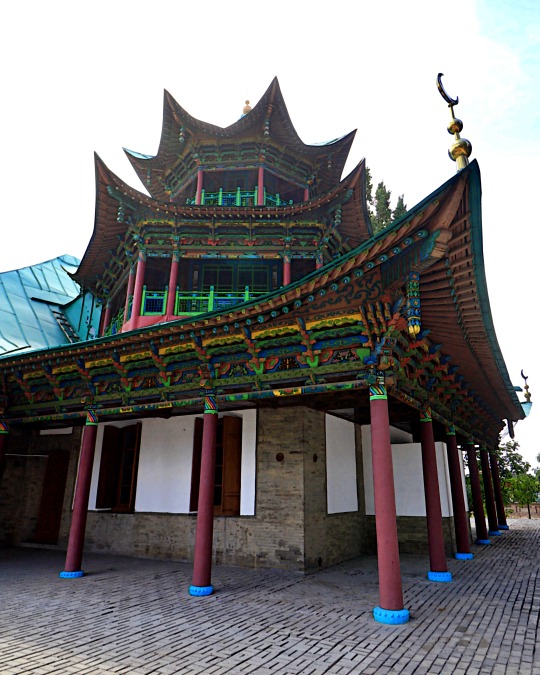

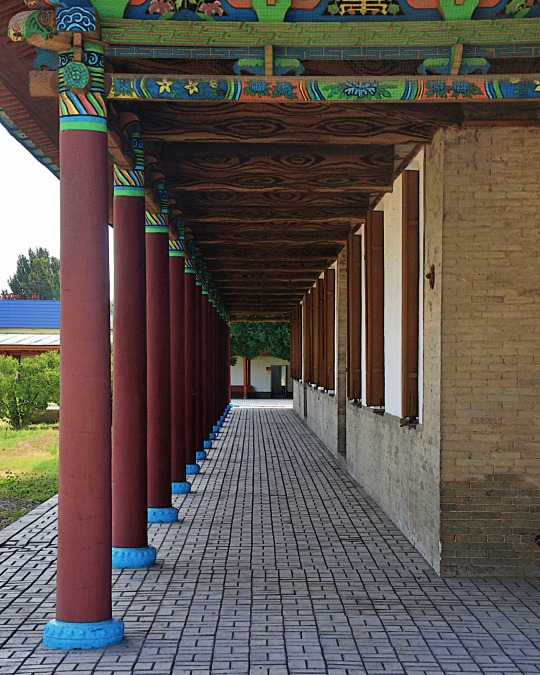
Old Mosque ( Zharkent / Kazakhstan )
#travel#travelphotography#photooftheday#adventure#trip#chinasestyle#kazakhstan#aroundtheworld#kazakhstantravel#mosque#islamic art#islamic architecture#zharkentoldmosque#zharkent#ualibaymosque#chineseislamicarchitecture#silk road#central asia#visitkazakhstan#oldmosque#architecture#islam
111 notes
·
View notes
Text
German linguists appear to have made an important breakthrough in cracking a previously unknown script, revealing it to be a Kushan language used by traders along the Silk Road.
#language#Silk Road#Tajikistan#script#Kushan#linguistics#decode#ancient#history#ancient origins#egypt
281 notes
·
View notes
Text

Female Europid Mummy from the Necropolis of Subexi III, Grave M6, Turfan District, Xinjiang. 5th-3rd C. BCE. Source: Baumer, Christoph.The history of Central Asia. Vol.1. The age of the steppe warriors. London : I.B. Tauris, 2012. pg. 218 left DS329.4 .B38 2012. Image via University of Pennsylvania. See maps in the post before this one for a better understanding of the geography discussed.
"Section 26 – The Kingdom of Nearer [i.e. Southern] Jushi 車師前 (Turfan)
1. ‘Nearer Jushi’ 車師前 refers to the kingdom or state centered in the Turfan oasis or, sometimes, to the tribe which controlled it. There can be no question that Nearer Jushi refers here to the Turfan Oasis. See for example: CICA, p. 183, n. 618; also note 1.5 above. For the etymology of the name Turfan see Bailey (1985), pp. 99-100, which is summed up in his sentence: “The name turpana- is then from *druva-pāna- ‘having safe protection’, a name suitable for a walled place.”
“One other oasis town is currently under excavation. At Yarghul (Jiaohe), 10 km (16 miles) [sic – this should read 10 miles (16 km)] west of Turpan, archaeologists have been excavating remains of the old Jushi capital, a long (1,700 m (5,580 ft)) but narrow (200 m (656 ft)) town between two rivers. From the Han period they uncovered vast collective shaft tombs (one was nearly 10 m (33 ft) deep). The bodies had apparently already been removed from these tombs but accompanying them were other pits containing form one to four horse sacrifices, with tens of horses for each of the larger burials.” Mallory and Mair (2000), pp. 165 and 167.
“Some 300 km (186 miles) to the west of Qumul [Hami] lie [mummy] sites in the vicinity of the Turpan oasis that have been assigned to the Ayding Lake (Aidinghu) culture. The lake itself occupies the lowest point in the Turpan region (at 156 m (512 ft) below sea level it is the lowest spot on earth after the Dead Sea). According to accounts of the historical period, this was later the territory of the Gushi, a people who ‘lived in tents, followed the grasses and waters, and had considerable knowledge of agriculture. They owned cattle, horses, camels, sheep and goats. They were proficient with bows and arrows.’ They were also noted for harassing travellers moving northwards along the Silk Road from Krorän, and the territories of the Gushi and the kingdom of Krorän were linked in the account of Zhang Qian, presumably because both were under the control of the Xiongnu. In the years around 60 BC, Gushi fell to the Chinese and was subsequently known as Jushi (a different transcription of the same name).” Mallory and Mair (2000), pp. 143-144.
“History records that in 108 BC Turpan was inhabited by farmers and traders of Indo-European stock who spoke a language belonging to the Tokharian group, an extinct Indo-Persian language [actually more closely related to Celtic languages]. Whoever occupied the oasis commanded the northern trade route and the rich caravans that passed through annually. During the Han Dynasty (206 BC-AD 220) control over the route see-sawed between Xiongnu and Han. Until the fifth century, the capital of this kingdom was Jiaohe.” Bonavia (1988), p. 131.
“Turpan is principally an agricultural oasis, famed for its grape products – seedless white raisins (which are exported internationally) and wines (mostly sweet). It is some 80 metres (260 feet) below sea level, and nearby Aiding Lake, at 154 metres (505 feet) below sea level, is the lowest continental point in the world.” Ibid. p. 137.
“The toponym Turfan is also a variation of Tuharan. Along the routes of Eurasia there are many other place names recorded in various Chinese forms that are actually variations of Tuharan.” Liu (2001), p. 268."
-Notes to The Western Regions according to the Hou Hanshu. Second Edition (Extensively Revised and Expanded). John E. Hill. University of Washington.
#tocharian#celtic#indo european#tarim basin#xinjiang#chinese history#mummies#history#ancient history#archaeology#anthropology#silk road#pagan
458 notes
·
View notes
Photo

The Silk Road between The Roman Empire and the Han Dynasty,1st-3rd century.
128 notes
·
View notes
Text
Chemistry Behind Ancient Pigment, 'Chinese Purple'

In ancient times, rare non-natural pigments, especially blues and purples. 'Chinese Purple' or 'Han Purple' a Barium Copper Silicate BaCuSi₂O₆ pigment, emerged from the Western Zhou to the Han Dynasty, found in terracotta army garments at the Qin Shi Huang Mausoleum. Initially linked to Egyptian Blue, Chinese Purple predates Silk Road contacts by centuries, suggesting an independent discovery.
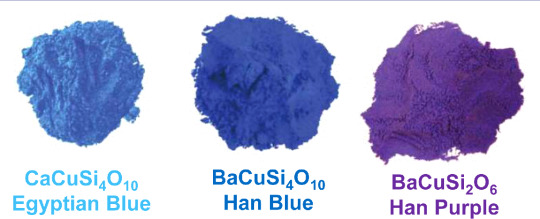
Likely an alchemical serendipity during Daoist experiments, its compounds—copper, barium, and lead—aligned with materials used by Daoist alchemists in creating ancient lead-barium glass.
#purple#ancient history#pigment#ancient china#chemistry#ancient culture#terracotta#silk road#interesting stuff#amazing facts#history
67 notes
·
View notes
Text

Silvia Furmanovich Silk Road Bracelet
Photo Courtesy: Silvia Furmanovich
Source: townandcountrymag.com
#silvia furmanovich#silk road#high jewelry bracelet#high jewelry#luxury jewelry#fine jewelry#fine jewellery pieces#gemville
78 notes
·
View notes
Note
She doesn't even mention the character's name (Geneva)😂
.
.
https://www.tumblr.com/bat-cat-reader/747585779840237568/ask
Dear Geneva Anon,
Irish people are feisty, boisterous, addictive, sentimental and larger than life. They also tend to often be jealous as hell(water - wee lame joke, again) and possessive, without ever admitting to it.
I very clearly remember an intercontinental tantrum thrown by Someone (1/2 Irish) by email (!), when I was traveling alone along the Silk Road and reached the Karakum Desert in Turkmenistan, visiting the Darvaza gas crater and sleeping in a tent under the stars, in the lunar emptiness we usually call the middle of nowhere. An Internet curfew made any contact impossible until I finally reached the Uzbek Karakalpakstan province, some five days later. I then found a truckload of WHERE ARE YOU? I AM SICK WITH WORRY. DO NOT PLAY GAMES WITH ME WOMAN emails, ranging from an improvised rubaiyat to pleading in at least three languages of shared use. That was 2010, Anon, and he knew perfectly well where the hell I was during all that time (he started the bet that sent me there and he planned the whole trip, FFS!) - still, bless his heart, could not help himself.
As far as I and my own life experience are concerned, FWIW, Anon the answer to your unasked question is a resounding yes. And I bet she would gladly send anytime that foolish Geneva girl straight through that Darvaza gas crater, aka the Door to Hell. Here, Anon, I found the pics of that desert road trip for you:

Also, the tent: the strangest night in my entire life, easily.
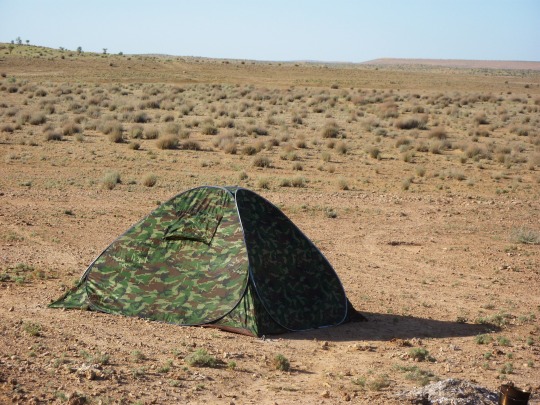
But you know what, Anon? I wasn't really interested by that BTS Season 2 tidbit, to be perfectly honest with you. Those banging pots, pans and that coughing boiler were far more telling than anything else.
Amen. Hope my convoluted answer helped, somehow.
33 notes
·
View notes
Text

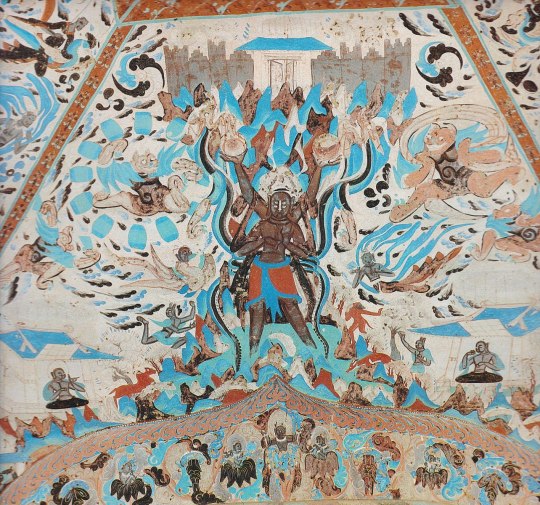
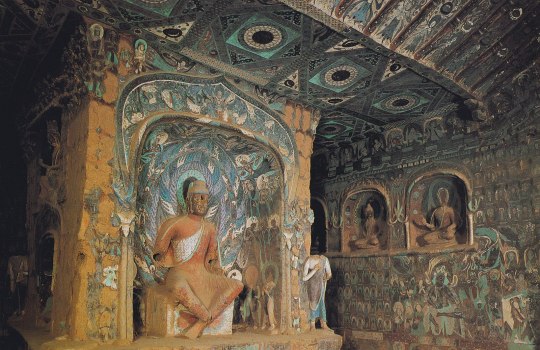

Much of the art in the medieval Buddhist temple-caves at Dunhuang was meant to inspire monks in their meditation. This is the art that is truly spectacular. It’s meant to be mind-blowing, to obliterate monks’ egos and help them to attain nirvana — literally, the blowing out of the flame of desire.
Artists created swirling, complex tableaux of people, animals, and supernatural figures. This was known as the "thousand-Buddha" style -- every square inch of the caves was covered with religious art.
{WHF} {Ko-Fi} {Medium}
195 notes
·
View notes
Text
A collection of mini fun facts : I'll explain them base on the sequence of the geography (MAP)
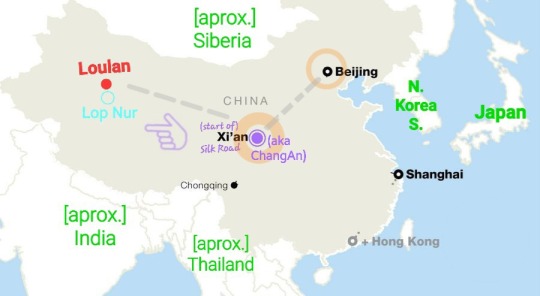
The CAPITALs : (orange circles)
Last time I talked about how palace in the anime take reference of Forbidden Palace, 🏛️ which is located in ☆Beijing, the capital city of Ming and Qing Dynasty.
However Xi'an🏛️ (aka ★ChangAn) is the capital city of TANG Dynasty,
which is the clothing style of the characters. (ChangAn is the ancient name of Xi'an)
FASHION :
During TANG, ★ChangAn, was a cosmopolitan and multicultural city since it is the starting destination of 🐫 Silk Road.

Ah Dou is wearing a riding suit, know as Hufu 👕. It was a fashion among the noble ladies to wear Hufu for horse ride🐴 . Hufu is male clothing of the *Western region (part of 🐫 Silk Road). [ *West is Central Asia, not Europe]

LOULAN : (red on map)
Maomao was curious of 💐Concubine Loulan who has Northen facial feature while wearing Southern outfit. In history, LouLan was the name of an ancient 👑kingdom at *Western region. It's location is modern Xinjiang near the now dried salt lake Lop Nur (MAP). The carved wooden beam above is an artifact of Loulan Kingdom.👑

NAIL POLISH :
Just as the anime, Balsam is a major ingredient for 💅nail polish (also for blush and lip color).
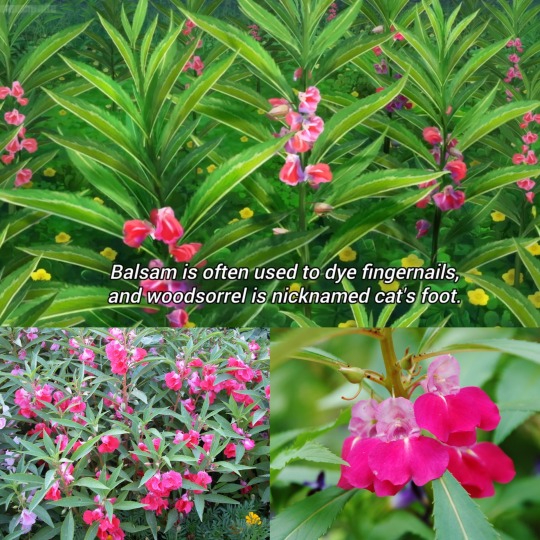
Balsam flowers are usually found in Central, East and South of Asia. When my grandma was a girl, she grounded the flower patels and apply them on nails then wait for a while , letting the juice to stain the nails before getting rid of the residue.
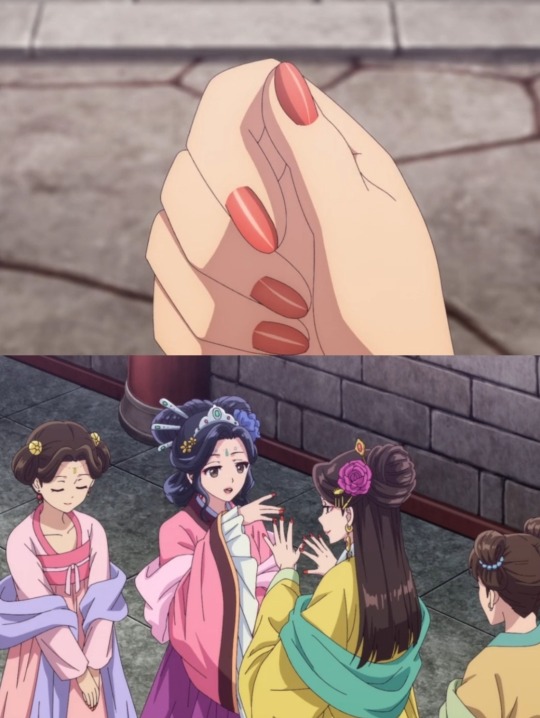
In ancient time, 💅 nail polish are made of juice of the grounded petals of balsam mixing with potassium alum. This chemical is used in drugs and silk painting / writing. 📚
WRITING :
Silk is more often used for painting than writing since it is expensive. Potassium alum is applied on silk as preparation for painting and writing.

Other than silk, bamboo and wooden slips were being used for writing, before paper is commonly used.
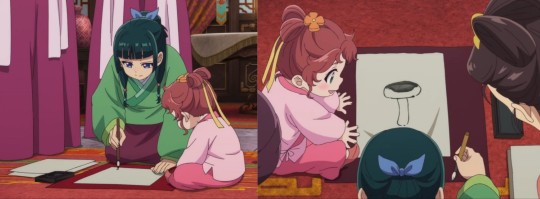
OX BEZOARS :
🐃 Ox bezoars (the drugs that turns Maomao into "upper moon demon" ) is used for de-toxing. 牛黃 is Chinese and kanji character of ox bezoars. Nowadays, it's made into tablet form know as 牛黃「解毒」片. In this context 「解毒」is meaning de-toxing. But some people mistaken 「解毒」means de - posion and think 牛黃「解毒」片 (Ox bezoars) can get rid of poison intaken by individuals, since Maomao mentioned to JinShin to use poison if she is ever facing death penalty.

#apothecary diary#maomao#jinshi#loulan#lihua#nail polish#horse#silk road#xi'an#Chang An#changan#beijing#tang dynasty#forbbiden palace#palace#japanese#chinese
23 notes
·
View notes
Note
Did the Ottoman Empire ever express any interest in the New World?
Not particularly, for two main reasons:

Accessing the New World would involve very disadvantageous naval wars with the Spanish Empire, who would use their incredible defensive position at the Straits of Gibraltar to interdict Ottoman vessels in the name of God and Glory.
They didn't really need the New World. The main reason why the Portuguese and Spanish had begun their overseas expansion was to bypass the Ottomans and their middle-men position athwart the Silk Road and between the Europeans and access to the Indes. Through investing in their Indian Ocean fleet and working out trade deals with the Mughal Empire, the Ottomans had direct access to the largest and richest textile markets and the Spice Islands of Indonesia.
Why go to the effort and expense of an Atlantic voyage when they had all the riches of the world practically on their doorstep?
#history#historical analysis#ottoman empire#mughal empire#silk road#spice islands#geopolitics#world history#early modern history
48 notes
·
View notes
Text

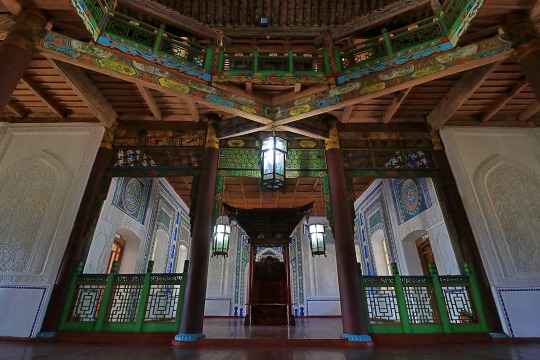







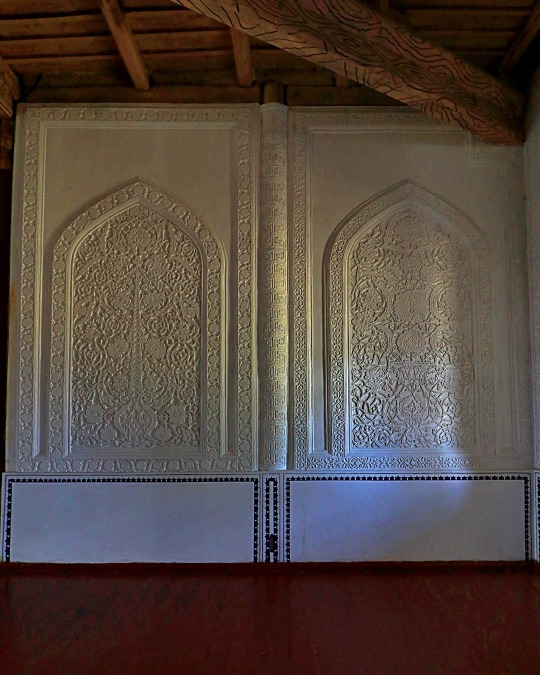
Old Mosque ( Zharkent / Kazakhstan )
#travel photography#visitkazakhstan#aroundtheworld#explore#trip#adventure#zharkent#travelphotography#photooftheday#zharkentoldmosque#travel#traveling#silk road#pickoftheday#chineseislamicarchitecture#chinese architecture#central asia#kazakhstan#architecture#islamic architecture#kazakhstantravel
101 notes
·
View notes
Text
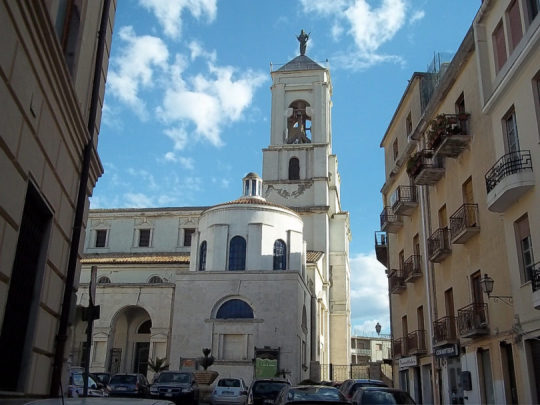

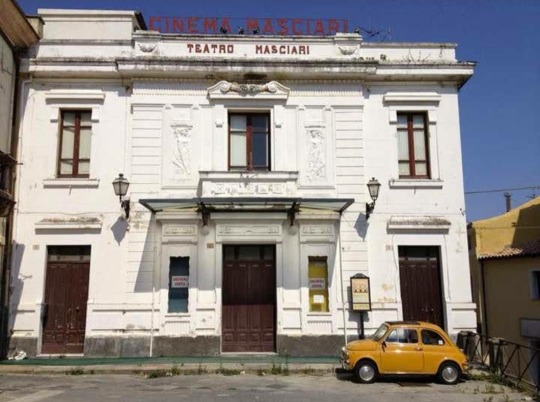
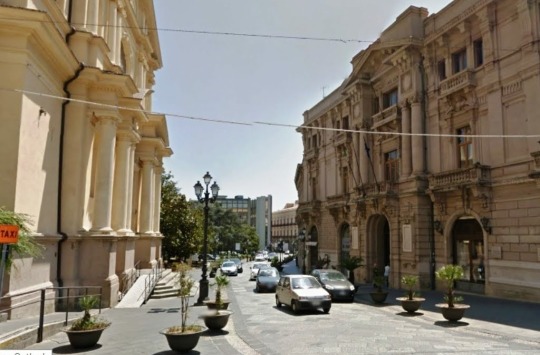

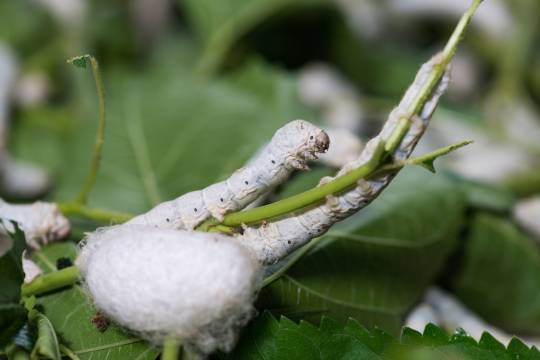
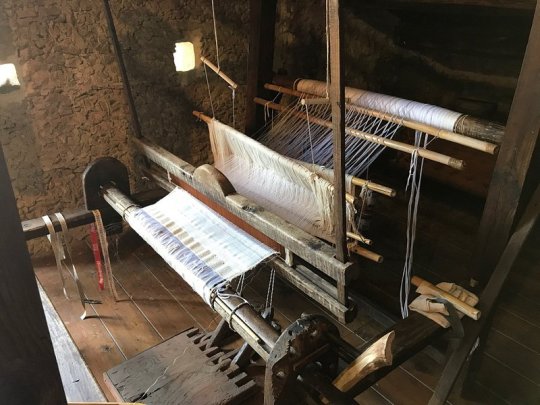
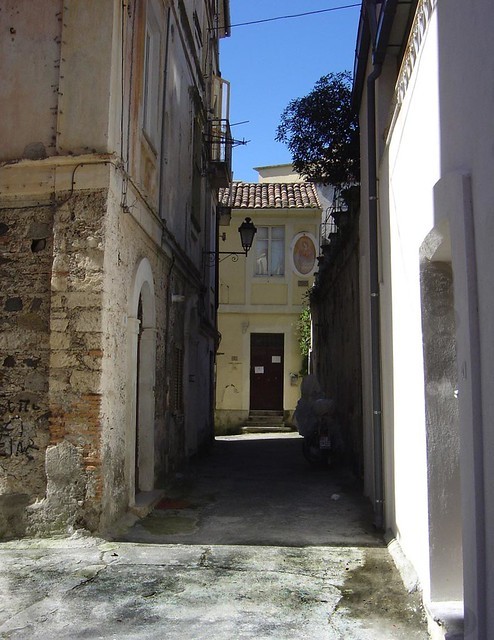
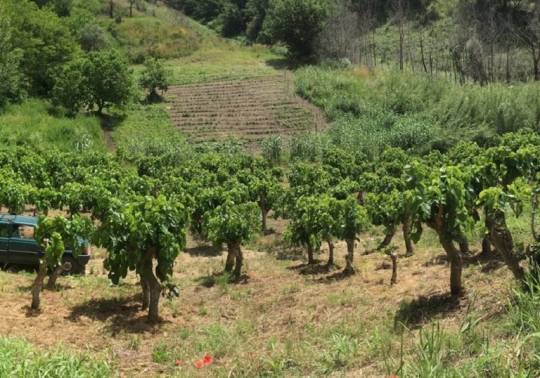
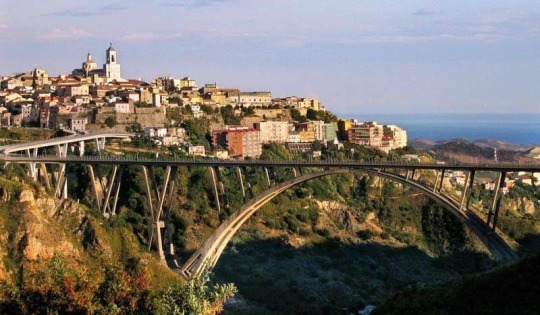
Catanzaro, Calabria, Italy
This ancient town which rises on a rock is the capital of the Calabria region. It was founded in 9th century by the Byzantines and was built over three hills in order to protect the town from the Saracen attacks arriving from the lonian sea.
At the beginning of the tenth century (c. 903), the city of Catanzaro was occupied by the Muslim Saracens, who founded an emirate and took the Arab name of قطنصار - Qatanşār.
An Arab presence is evidenced by findings at an eighth-century necropolis which had items with Arabic inscriptions. Around the year 1050, Catanzaro rebelled against Saracen dominance and returned to a brief period of Byzantine control.
Under the Byzantine dominion, between the end of the 9th and the beginning of the 10th century, Calabria was one was one the first places in Italy to introduce the breeding of the silkworm in the 11th century.
According to French historian André Guillou, mulberry trees for the production of raw silk were introduced to Calabria by the Byzantines at the end of the 9th century. Mulberry leaves are the only leaves that silkworms eat.
Around 1050, the theme of Calabria had cultivated 24,000, mulberry trees for their foliage, with growth still ongoing.
The peasants of the countryside around the city produced the raw silk, which was then woven in the silk workshops of Catanzaro. A large part of the population was involved in this business, and the silk of Catanzaro supplied almost all of Europe.
The silk was sold in a large market fair in the port of Reggio Calabria, to Spanish, Venetians, Genovese and Dutch merchants.
Today, three young friends have come together to bring local traditions back to the fore. In 2014 they decided to build their future in San Floro, a tiny village of 600 inhabitants near the city of Catanzaro and restore the traditional mulberry tree planting and cultivation needed for the rearing of silkworms. Historically, San Floro was famous for a very significant production of raw silk in the 17th century, though this heritage had been completely lost in modern times.
The only surviving elements of this rich legacy were the 3,000 abandoned mulberry trees and the memory of the elderly villagers. Miriam and her friends brought back the production of silk, rewinding the threads of history and travelling across the world to exchange best practices with silk institutes in Thailand, India, Switzerland, and France.
As part of its development, they trained people interested in their new, sustainable production model and also brought thousands of tourists from all over the world to visit their farm (Nido di Seta) to experience how silk is produced first-hand.
Catanzaro is a windy city due to its altitude and position between two seas. In fact, there is only 30 km separating the Ionian Sea from the Tyrrhenian Sea and Catanzaro is wide open to the constant strong breezes from the Ionian Sea and the Sila mountains.
Follow us on Instagram, @calabria_mediterranea
#catanzaro#calabria#italy#italia#south italy#southern italy#italian#mediterranean#silk#the silkworm#silk road#europe#architecture#textile#loom#mulberry tree#history#muslim#saracens#italian landscape#landscape#mediterranean sea#arab#byzantine#byzantine empire#weaving#nido di seta
21 notes
·
View notes